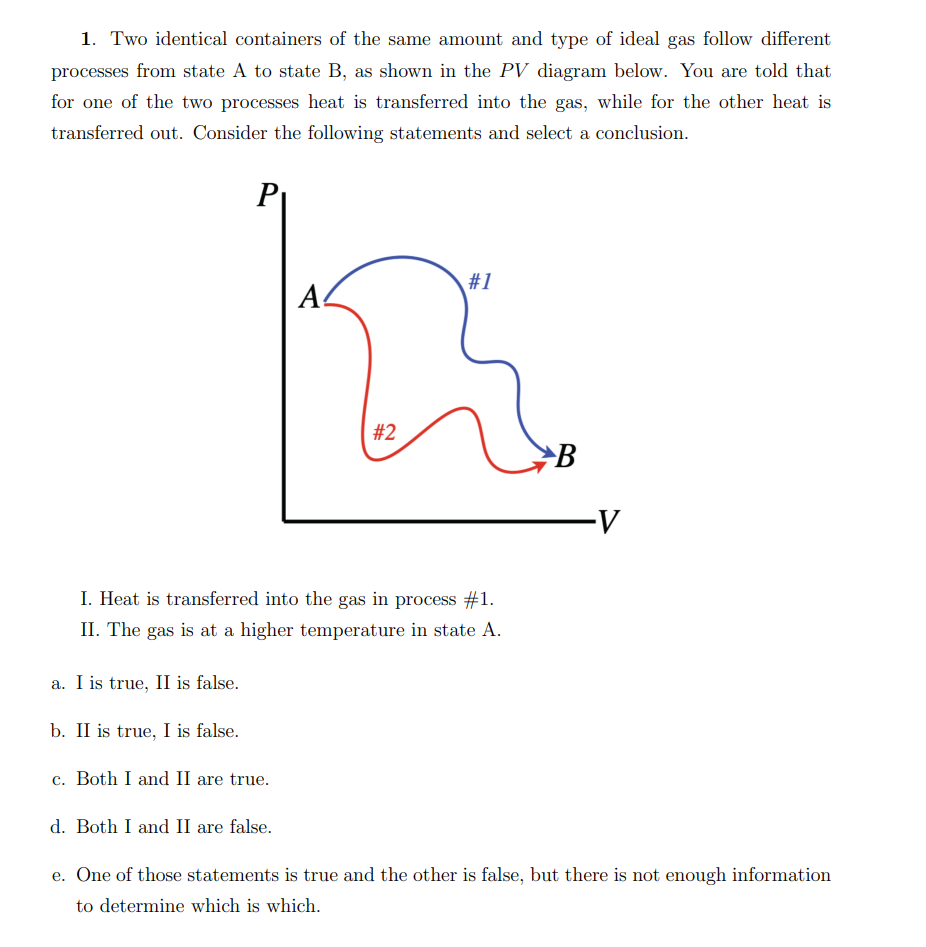1. Two identical containers of the same amount and type of ideal gas follow different processes from state A to state B, as shown in the PV diagram below. You are told that for one of the two processes heat is transferred into the gas, while for the other heat is transferred out. Consider the following statements and select a conclusion. P A #2 #1 B ·V I. Heat is transferred into the gas in process #1. II. The gas is at a higher temperature in state A. a. I is true, II is false. b. II is true, I is false. c. Both I and II are true. d. Both I and II are false. e. One of those statements is true and the other is false, but there is not enough information to determine which is which.
Thermochemistry
Thermochemistry can be considered as a branch of thermodynamics that deals with the connections between warmth, work, and various types of energy, formed because of different synthetic and actual cycles. Thermochemistry describes the energy changes that occur as a result of reactions or chemical changes in a substance.
Exergonic Reaction
The term exergonic is derived from the Greek word in which ‘ergon’ means work and exergonic means ‘work outside’. Exergonic reactions releases work energy. Exergonic reactions are different from exothermic reactions, the one that releases only heat energy during the course of the reaction. So, exothermic reaction is one type of exergonic reaction. Exergonic reaction releases work energy in different forms like heat, light or sound. For example, a glow stick releases light making that an exergonic reaction and not an exothermic reaction since no heat is released. Even endothermic reactions at very high temperature are exergonic.

Trending now
This is a popular solution!
Step by step
Solved in 2 steps









